
Smart Board technology will assist students with metric system conversions.
- Subject:
- Mathematics
- Material Type:
- Lesson Plan
- Provider:
- BetterLesson
- Date Added:
- 12/01/2022

Smart Board technology will assist students with metric system conversions.

In the following video Paul Andersen explains how mass can be converted to energy and energy can be converted to mass. [3:30]
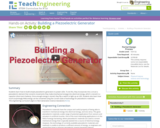
Students learn how to build simple piezoelectric generators to power LEDs. To do this, they incorporate into a circuit a piezoelectric element that converts movements they make (mechanical energy) into electrical energy, which is stored in a capacitor (short-term battery). Once enough energy is stored, they flip a switch to light up an LED. Students also learn how much (surprisingly little) energy can be converted using the current state of technology for piezoelectric materials.

This site explores the requirements for conversion to Judaism. Also discusses how different branches of Judaism view conversion. Touches on Israel's view of conversion.

This lesson introduces the concept of conversion of squared units between units and systems of measurement. It is 4 of 5 in the series titled "Conversion of Square Units." [3:31]

This lesson demonstrates conversion from feet, yards and meters. It is 1 of 5 in the series titled "Converting Between Feet Yards and Meters." [3:39]

In this lesson, students see how to convert from feet or yards to miles. It is 2 of 4 in the series titled "Converting Between Feet and Yards and Miles." [2:21]

Students see how to convert between square feet, square yards and square meters. This lesson is 1 of 6 in the series titled "Converting Between Square Feet Yards and Meters." [3:27]
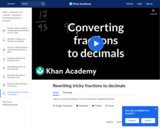
This lesson shows how to write a fraction as a decimal number.
Khan Academy learning modules include a Community space where users can ask questions and seek help from community members. Educators should consult with their Technology administrators to determine the use of Khan Academy learning modules in their classroom. Please review materials from external sites before sharing with students.

This lesson demonstrates how to convert between units in the metric system, when working with squared units.

This lesson [2:31] demonstrates how to convert between units in the metric system, when working with squared units. It is 1 of 8 in the series titled "Converting Square Units in the Metric System."

This lesson [3:49] demonstrates conversion from a long number to scientific notation. It is 1 of 10 in the series titled "Converting to Scientific Notation."
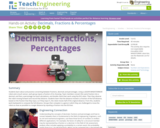
Students learn about and practice converting between fractions, decimals and percentages. Using a LEGO® MINDSTORMS® NXT robot and a touch sensor, each group inputs a fraction of its choosing. Team members convert this same fraction into a decimal, and then a percentage via hand calculations, and double check their work using the NXT robot. Then they observe the robot moving forward and record that distance. Students learn that the distance moved is a fraction of the full distance, based on the fraction that they input, so if they input ½, the robot moves half of the original distance. From this, students work backwards to compute the full distance. Groups then compete in a game in which they are challenged to move the robot as close as possible to a target distance by inputting a fraction into the NXT bot.
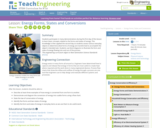
The students participate in many demonstrations during the first day of this lesson to learn basic concepts related to the forms and states of energy. This knowledge is then applied the second day as they assess various everyday objects to determine what forms of energy are transformed to accomplish the object's intended task. The students use block diagrams to illustrate the form and state of energy flowing into and out of the process.
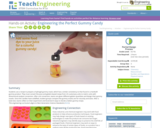
Students use a recipe to prepare a hydrogel gummy snack, which has a similar consistency to that found in a Haribo® gummy product. They must convert the juice and gelatin-based recipe from US customary units to metric units with dimensional analysis conversion. After unit conversion, teams are given different gelatin quantities and design their gummy snacks. Once the candies have solidified, student groups compare the gummy snacks are for viscosity and taste. After a taste test, teams reflect on their experiment and brainstorm ways to iterate a better gummy recipe.
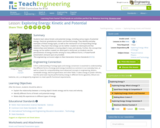
Students learn about kinetic and potential energy, including various types of potential energy: chemical, gravitational, elastic and thermal energy. They identify everyday examples of these energy types, as well as the mechanism of corresponding energy transfers. They learn that energy can be neither created nor destroyed and that relationships exist between a moving object's mass and velocity. Further, the concept that energy can be neither created nor destroyed is reinforced, as students see the pervasiveness of energy transfer among its many different forms. A PowerPoint(TM) presentation and post-quiz are provided.

Listen and view examples of unit conversions and unit analysis. Examine English to Metric and Metric to Metric conversion examples.
![An Introduction to Chemistry: Unit Conversions [PDF]](https://openspace.infohio.org/static/newdesign/images/materials/default-thumbnail-index.png)
Read and learn about the unit conversion analysis step and English-Metric conversion factors. Learn the steps to rounding answers from division and multiplication problems and formulas for temperature and density conversions.
![An Introduction to Chemistry: Unit Conversions: Study Guide [PDF]](https://openspace.infohio.org/static/newdesign/images/materials/default-thumbnail-index.png)
Test your knowledge and understanding on unit conversions by completing this study guide. Review topics such as temperature conversions, density conversions, density calculations, and rounding unit conversions.

This Washington State University site provides a wonderful source for all the literary movements that have taken place in American Literature from 1620-1920. Click on the movement (listed on the left)you are interested in (Naturalism, Realism, Transcendentalism, etc.) and information will be provided on the definition, characteristics, practitioners, and context and controversy of each movement.